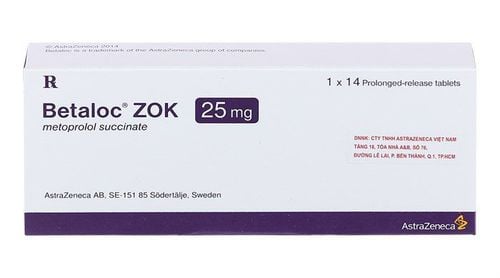This is an automatically translated article.
The article was written by MSc Nguyen Thi Minh Phuong - Doctor of Neurology, Department of General Internal Medicine - Vinmec Times City International HospitalMigraine is the most common form of headache, occurring in about 14% of the population. Migraine headaches often have a serious impact on quality of life. Until now, the understanding of the pathogenesis of migraine has made progress, and since then, scientists have also found a number of new drugs with encouraging effects in the treatment and prevention of migraine. Migraine room.
1. How does Migraine headache manifest?
Usually occurs on one side of the head. The intensity of the pain is strong, which can make the patient unable to work. Pain is often pulsating in nature. During pain, the patient may experience nausea, vomiting, or fear of light and noise. Pain increases with movement. The pain lasts from 3 to 72 hours. Before the pain, the patient may have visual abnormalities.
2. Previous Migraine Treatments
To date, the pathogenic mechanism in migraine is not completely understood. Scientists believe this is a complex process, and a difficult disease to treat. Methods that have been used in the treatment of Migraine include:
Tricyclic antidepressants Antiepileptic drugs Antihypertensives Injections Onabotulinumtoxin A Triptans Pain relievers Stimulation of the vagus nerve Transient magnetic field stimulation Cerena skull Transcutaneous trigeminal nerve stimulation

Thuốc hạ huyết áp được sử dụng trong điều trị Migraine
3. New generation drugs for the treatment of Migraine
Recent studies have shown the role of CGRP (Calcitonin Gene- Related Peptid) - a neuropeptide - in the pathogenesis of migraine. Since then, scientists have produced monoclonal antibodies that target the CGRP receptor or CGRP ligand. As of 2018, four monoclonal antibodies have been approved by the FDA for use in the prophylaxis of migraine headaches:Erenumab Fremanezumab Galcanezumab Eptinezumab These monoclonal antibodies are produced entirely from humans (i.e., without the murine protein chain). ), so it is less likely to induce an immune response. Moreover, with a size of 150,000Da, these antibodies hardly cross the blood-brain barrier. About 25% of patients using the drug have almost completely stopped the pain, more than 50% of patients have significantly reduced pain. including pain and number of days off work due to pain/month. Studies show that the drug has almost no side effects, and is effective even in patients who have not responded to previous conventional therapies. A new class of drugs in pain relief recently (years) 2019-2020) is also approved for use by the FDA. It is a group of drugs called “gepants”. These are small molecule CGRP receptor antagonists.

Bác sĩ sẽ là người điều chỉnh đơn thuốc cho phù hợp với tình trạng bệnh lý của người bệnh
Ubrogepant Rimegepant The above drugs can be used in cases where the patient is intolerant of Triptans, does not respond to treatment with Triptan, or has cerebrovascular disease - heart disease accompanied by headache.
In summary, the understanding of the pathogenesis of Migraine is increasingly updated and since then many new generations of drugs have been applied. However, the use of the drug needs to be carefully consulted by a doctor to be able to control headaches well, and at the same time minimize unwanted side effects.
Please dial HOTLINE for more information or register for an appointment HERE. Download MyVinmec app to make appointments faster and to manage your bookings easily.













